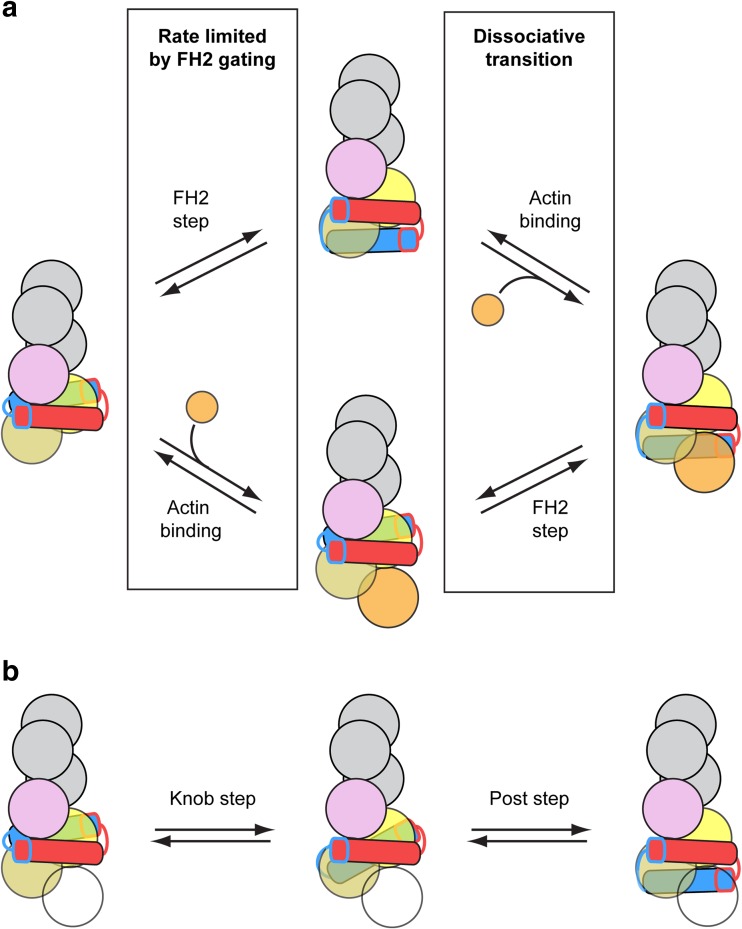Fig. 4.
Two models for FH2-mediated actin polymerization. a Cartoon representation of the addition of an actin subunit (orange circle) to the barbed end of an actin filament bound by an FH2 dimer. Upper reaction scheme = the “stair-stepping” model in which the trailing FH2 domain (blue domain) steps forward before an incoming actin subunit (orange circle) binds to the barbed end. Lower reaction scheme = the “stepping second” model, in which actin binds to the barbed end prior to stepping of the trailing FH2 domain. In both models, the first reaction is limited by FH2 gating. Dissociation of the FH2 dimer from the barbed end is most likely to occur during the second reaction, which involves the population of a dissociative transition state (Cao et al. 2018; Paul and Pollard 2008, 2009b). b Cartoon representation of a two-step model for the translocation of the trailing FH2 domain, in which an intermediate state is populated (Thompson et al. 2013). The intermediate state is formed by dissociation of the knob subdomain from its trailing binding site (pink circle), followed by translocation and association with a binding site at the barbed end (light orange circle). In this state, the FH2 dimer is bound to two actin subunits. Complete stepping of the trailing FH2 domain is achieved via subsequent translocation of the post subdomain, as depicted in the second reaction. This two-step model for stepping can occur as part of either the stair-stepping or stepping second model for actin subunit addition. To account for this, the incoming actin subunit is depicted as a transparent circle

